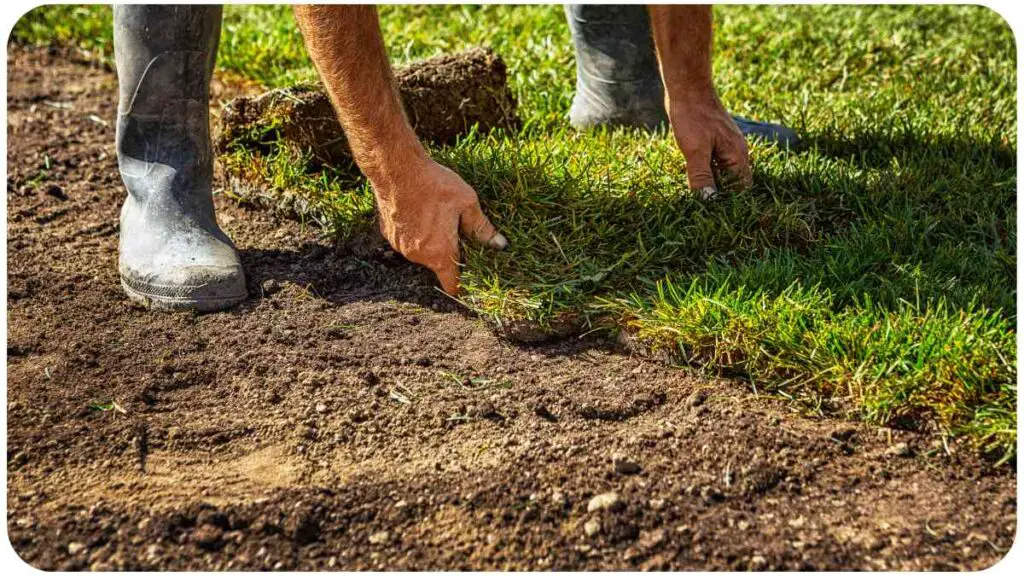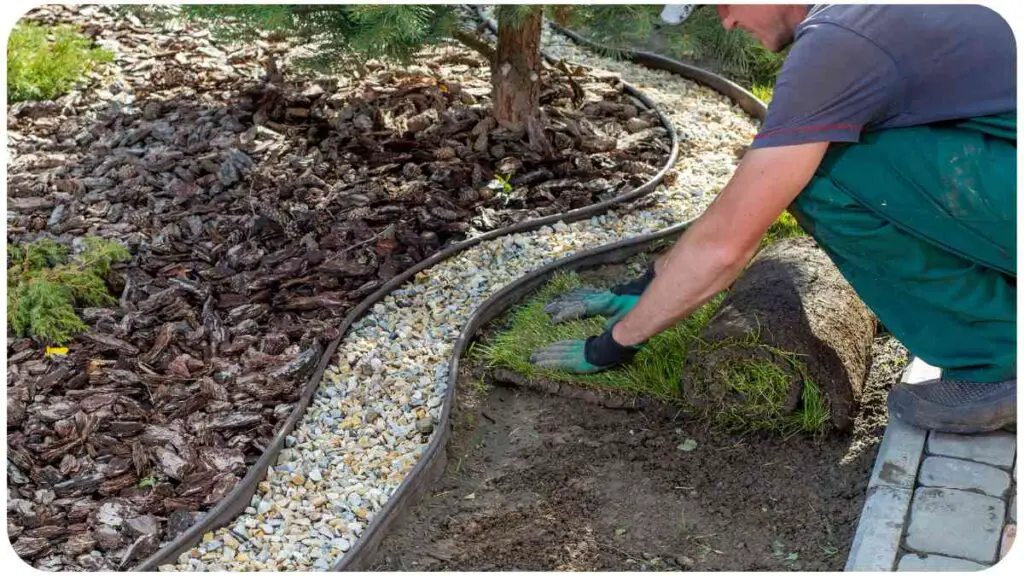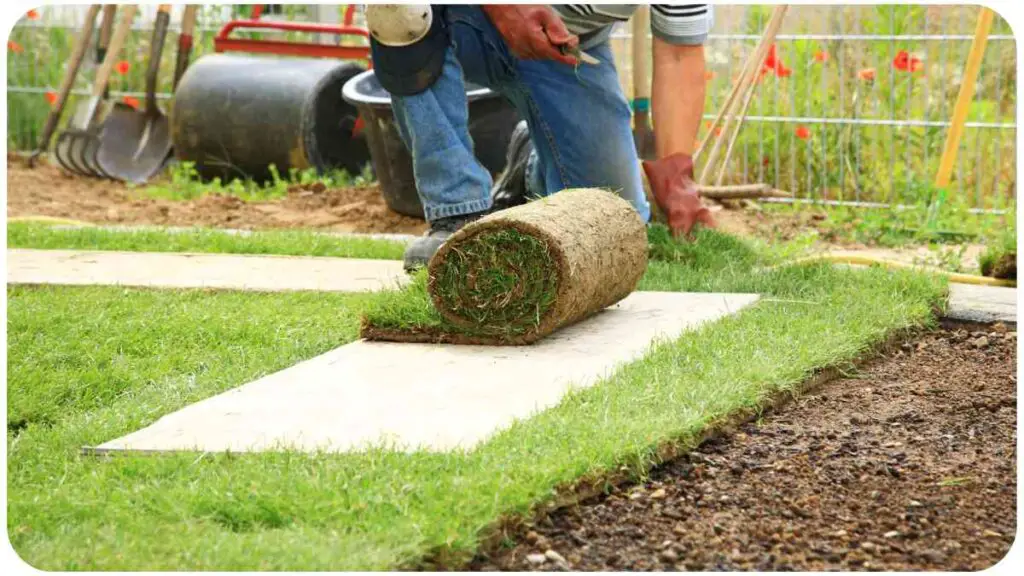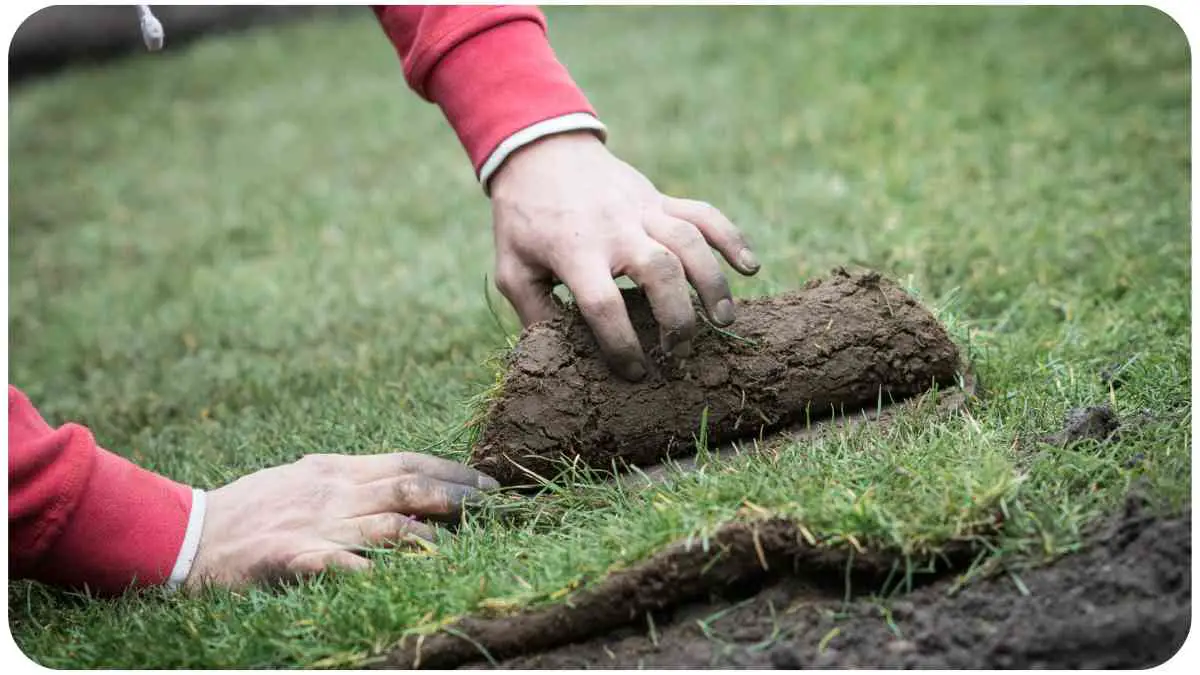A lush, green lawn can significantly enhance the curb appeal of your home. However, over time, wear and tear, pests, diseases, and weather conditions can leave your lawn looking patchy and unhealthy. Resodding, the process of replacing old or damaged sod with fresh grass, is often the solution to rejuvenating your front lawn.
But how much does it cost? In this comprehensive guide, we’ll break down the factors influencing resodding costs, provide a detailed cost breakdown, discuss the pros and cons of DIY versus hiring a professional, explore different types of sod, offer tips for preparing your lawn, detail the resodding process, and provide maintenance tips post-resodding.
| Takeaways |
|---|
| 1. Resodding your front lawn can enhance curb appeal. |
| 2. Factors such as sod type and labor costs affect resodding expenses. |
| 3. Proper soil preparation is crucial for successful resodding. |
| 4. Consider hiring a professional for efficient and quality results. |
| 5. Regular maintenance post-resodding ensures a healthy lawn. |
2. Factors Affecting Resodding Costs
Resodding costs can vary depending on several factors. Let’s take a look at the average cost factors:
Transforming a sloping front yard into a beautiful landscape requires creativity and planning. With the right techniques and ideas, you can beautify your outdoor space effectively.
Table 1: Average Cost Factors
| Factor | Impact on Cost |
|---|---|
| Lawn Size | Larger lawns require more sod and labor. |
| Type of Sod | Premium sod varieties may cost more. |
| Soil Preparation | Extensive soil preparation can add to costs. |
| Labor Costs | Hiring professionals versus DIY affects cost. |
| Location | Costs may vary based on geographical area. |
3. Cost Breakdown of Resodding

Understanding the breakdown of costs associated with resodding can help you budget effectively. Here’s a detailed breakdown:
Table 2: Cost Breakdown
| Expense | Average Cost Range |
|---|---|
| Sod | $0.30 – $1.50 per sq ft |
| Soil Preparation | $100 – $500 |
| Labor | $0.50 – $1.00 per sq ft |
| Equipment Rental | $50 – $200 |
| Delivery Fees | $50 – $150 |
| Additional Materials | $50 – $200 |
| Total | Varies |
Keep in mind that these are average costs, and actual expenses may vary based on factors such as lawn size, sod type, and labor rates in your area.
4. DIY vs. Hiring a Professional
Deciding whether to tackle the resodding project yourself or hire a professional depends on various factors. Let’s weigh the pros and cons:
Wondering how long to keep dogs off freshly fertilized grass? It’s crucial to know the right timing to protect your lawn and pets simultaneously.
Table 3: Pros and Cons
| Aspect | DIY | Hiring a Professional |
|---|---|---|
| Cost | Lower initial cost | Higher upfront cost |
| Expertise | Requires knowledge | Professional expertise |
| Time | Time-consuming | Faster completion |
| Quality | Variable results | Consistent quality |
| Convenience | Flexible schedule | Dependable service |
Consider your skill level, available time, and budget when making this decision.
5. Choosing the Right Sod
The type of sod you choose plays a significant role in the overall outcome of your resodding project. Here are some popular sod types and their characteristics:
Table 4: Popular Sod Types and Their Characteristics
| Sod Type | Characteristics |
|---|---|
| Bermuda Grass | Drought-resistant, durable, warm-season. |
| Zoysia Grass | Heat and drought tolerant, low maintenance. |
| Kentucky Bluegrass | Fine texture, cold-tolerant, lush appearance. |
| Fescue | Shade-tolerant, cool-season grass. |
Evaluate your climate, sunlight exposure, and maintenance preferences to select the right sod for your lawn.
6. Preparing Your Lawn for Resodding

Before laying down new sod, proper preparation of your lawn is crucial for the success of the resodding project. Here are some essential steps:
- Remove Existing Sod: Use a sod cutter or a shovel to remove the old grass and weeds. Ensure you remove any debris and rocks from the soil surface.
- Soil Testing: Conduct a soil test to determine its pH level and nutrient content. Amend the soil as necessary to create optimal growing conditions for the new sod.
- Leveling: Fill in any low spots and level the soil surface using a rake or a lawn roller. This ensures uniformity and prevents water pooling after sod installation.
- Soil Conditioning: Add organic matter such as compost to improve soil structure and fertility. This enhances root growth and overall sod establishment.
By following these preparatory steps, you’ll create an ideal environment for the new sod to thrive.
Looking for alternatives to kill grass and weeds quickly? Explore effective methods to maintain a healthy lawn without harmful chemicals.
7. Resodding Process
Now that your lawn is prepped and ready, it’s time to lay down the new sod. Here’s a step-by-step guide to the resodding process:
- Order Sod: Purchase high-quality sod from a reputable supplier. Consider the quantity needed based on your lawn size.
- Delivery: Arrange for sod delivery on the day of installation to ensure freshness.
- Installation: Start laying sod along the straightest edge of your lawn, such as a sidewalk or driveway. Stagger the sod pieces in a brick-like pattern to minimize seams.
- Cutting: Use a sharp knife or sod cutter to trim sod pieces to fit around landscape features like trees and flower beds.
- Watering: Immediately after installation, water the sod thoroughly to prevent it from drying out. Keep the soil consistently moist during the establishment period.
- Maintenance: Follow proper watering and mowing practices to promote healthy sod growth. Avoid heavy foot traffic on newly laid sod until it has established roots.
Following these steps ensures a successful resodding project and helps your new lawn thrive for years to come.
Dealing with garden pests? Explore useful tips and tricks to protect your garden from unwanted invaders and keep your plants healthy.
8. Maintenance Tips After Resodding

After resodding your front lawn, proper maintenance is essential to ensure the longevity and health of the new grass. Here are some maintenance tips:
- Watering: Water the newly laid sod regularly to keep the soil moist but not waterlogged. Gradually reduce watering frequency as the sod establishes roots.
- Mowing: Wait until the sod has rooted firmly before mowing. Set the mower blade to the recommended height for your sod type and avoid cutting more than one-third of the grass height at a time.
- Fertilization: Apply a balanced fertilizer to provide essential nutrients for healthy growth. Follow recommended application rates and timings.
- Weed Control: Monitor the lawn for weeds and promptly remove any that appear. Avoid using herbicides until the sod has established to prevent damage.
Curious about the cost of gardening? Discover factors influencing expenses and plan your gardening budget effectively for a beautiful outdoor space.
By following these maintenance practices, you’ll keep your newly resodded lawn looking lush and vibrant.
9. Conclusion
Resodding your front lawn can transform its appearance and enhance your home’s curb appeal. While the cost of resodding may vary depending on various factors, careful planning and proper execution can ensure a successful outcome. Whether you choose to tackle the project yourself or hire a professional, investing in high-quality sod and following recommended maintenance practices will result in a healthy and beautiful lawn for years to come. We hope this guide has provided valuable insights and tips for your resodding journey. Here’s to enjoying a vibrant green lawn!
Further Reading
- Lawn Love: Sod Cost
- Explore detailed information about the cost of sodding your lawn and factors that can influence the overall expenses.
- Angi: How Much Does It Cost to Lay Sod?
- Learn about the average cost of laying sod and get insights into the process to make informed decisions for your lawn.
- Forbes: Cost to Lay Sod
- Discover expert advice on the cost of laying sod and tips for optimizing your investment in your lawn.
FAQs
How long does it take for newly laid sod to root?
Newly laid sod typically takes about 2 to 3 weeks to establish root growth. However, factors such as soil moisture, temperature, and sod type can influence the rooting process.
Can I walk on newly laid sod?
It’s best to avoid walking on newly laid sod until it has established roots, which usually takes about 2 to 3 weeks. Walking on sod too soon can damage the delicate root system and hinder its growth.
How often should I water newly laid sod?
During the establishment period, newly laid sod should be watered frequently to keep the soil consistently moist. Water the sod 2 to 3 times daily for the first week, then gradually reduce watering frequency as the sod roots establish.
When is the best time to lay sod?
The best time to lay sod is during the cooler months of spring or fall when temperatures are moderate, and rainfall is more abundant. Avoid laying sod during extreme heat or cold, as it can stress the grass and impede its establishment.
How do I know if my sod needs fertilization?
Monitor the color and growth of your sod to determine if it needs fertilization. If the grass appears pale or lacks vigor, or if growth is slow, it may benefit from fertilization. Conduct a soil test to assess nutrient levels and apply fertilizer accordingly.

Hi! My name is Hellen James, and I’m here to help you with your home-maintenance needs. Whether it’s building a better yard or just trying to fix a garden—I can show you how.


